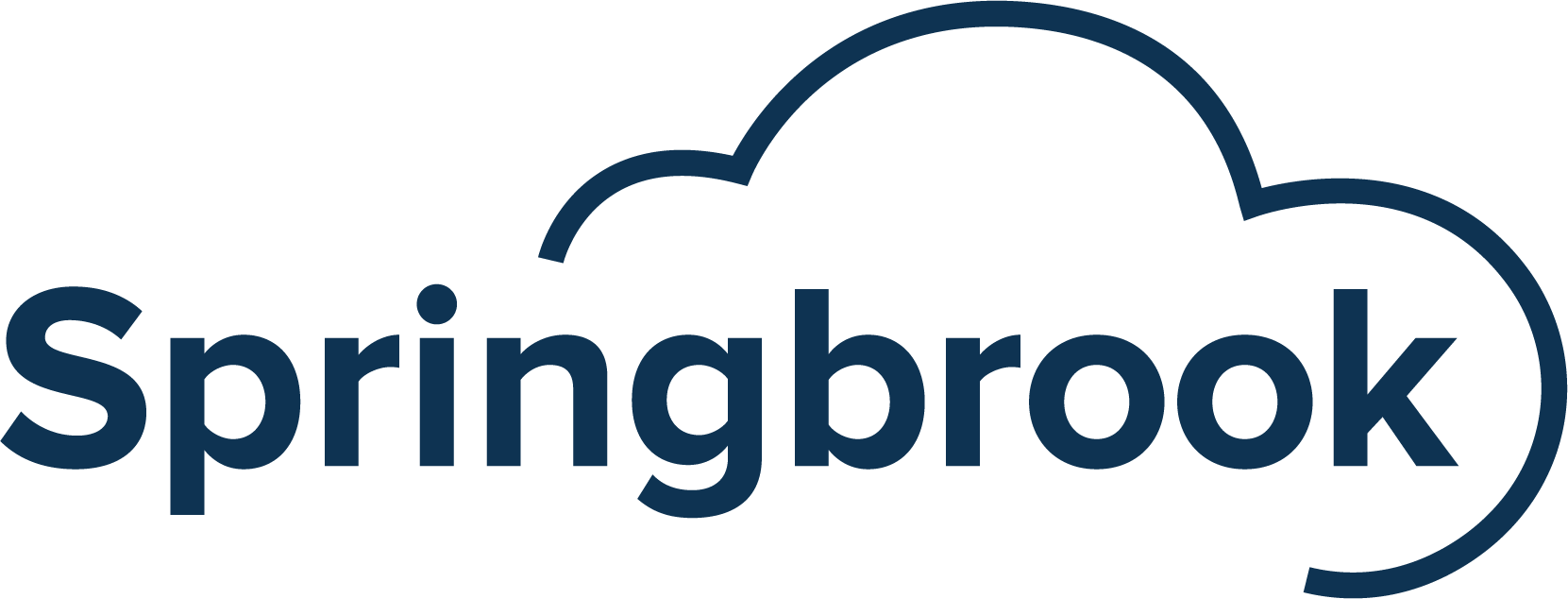In a rapidly evolving digital landscape, managing IT operations has become increasingly challenging for local governments. There is growing pressure to innovate and provide citizens with user-friendly digital experiences akin to those in the private sector. But IT directors are expected to deliver these services amidst significant constraints, such as inadequate funding, outdated technology, considerable talent gaps, and even a lack of stable Internet access in some rural areas.
An aging infrastructure compounds these challenges. Approximately one-third of local government IT systems urgently require updates or replacements. The lack of investment in modernizing these systems not only hampers effective IT operations and management but also impedes local government’s ability to deliver high-quality services and digital user experiences that meet the demands of their constituents. As government entities are also increasingly vulnerable to cyber threats, obsolete and unsupported technology solutions represent yet another security liability that IT directors must address.
Emerging technologies such as artificial intelligence (AI) offer solutions to some of these challenges, driving momentum toward adoption. But despite the promise of innovation and improved efficiency, many local governments are not ready to fully take advantage of its capabilities. Without a robust data governance strategy and technology services capable of handling large amounts of data, the full potential of AI will not be realized.
Investing in cutting-edge technology will be essential for addressing these critical challenges and will allow government IT directors to make the most of their limited resources. Join us as we examine the key hurdles facing government IT directors in 2024 and delve into the solutions provided by innovative technology.
- Inadequate Resources
Making the most of limited resources while the public demand for large-scale investments grows will be one of the primary hurdles facing government IT directors in 2024 and beyond.
Federal relief funds are set to run out by the close of 2024, signaling an end to the large number of modernization projects fueled by stimulus packages. As government revenues continue to dwindle and tax incomes decrease, IT directors face fierce competition for tax dollars, leaving many departments strapped for cash and struggling to prioritize between day-to-day maintenance and pursuing innovative solutions that could drive efficiency and growth.
The unfortunate result? Without the resources to invest in modern technology solutions, a lack of efficiency is widespread across organizations, hindering their ability to serve citizens effectively. With IT departments forced to allocate their limited budget to routine maintenance tasks, pursuing transformative IT solutions often takes a backseat.
How Technology Can Help
Modern Enterprise Resource Planning (ERP) solutions, such as Springbrook’s Cirrus, equip local governments with the tools needed to balance tight budgets, track their spending, and gain insights into the long-term impact of their investments. Robust ERP software allows organizations to construct flexible technology budgets capable of adapting to multiple scenarios, preview the financial impact of their initiatives, and prioritize projects to make the most of their limited resources.
With the shared resource model of a multi-tenant Software as a Service (SaaS) solution, cutting-edge ERP technology also allows IT directors to capitalize on the benefits of economies of scale as leading vendors optimize the allocation of bandwidth, storage, and computing power across their infrastructure. With a SaaS solution, IT departments can save on the hardware, software, and maintenance costs associated with hosting, managing, and securing their own solutions and can sign up for services at a predictable monthly fee, easing budgeting.
Multi-tenant SaaS solutions also offer a degree of flexibility and scalability unmatched by on-premises or public cloud-hosted solutions. Organizations can seamlessly adjust their resources based on current demands. Whether experiencing rapid growth or downsizing, SaaS solutions empower IT directors to scale systems up or down with ease, ensuring that the organization only pays for the resources it needs.
- Aging Infrastructure
In an increasingly digital landscape, outdated technology systems and an aging infrastructure are pressing concerns for government agencies. The public sector often trails behind the private sector by 18 to 24 months or even longer, with a staggering one-third of local government IT systems in need of urgent updating or replacement. Without significant investments in modernizing these systems, effective IT operations and user-friendly citizen services remain out of reach.
Outdated infrastructure, no longer supported by vendors, poses significant risks for government organizations. Reliance on obsolete technology not only increases the likelihood of system failures and requires substantial resources to maintain but also exposes agencies to cyber risks. A significant portion of cyber attacks target aging technology, leveraging otherwise outdated malware to exploit unsupported operating systems and legacy gateway appliances.
While IT directors know that innovation is essential, it often encounters resistance from the rest of the organization. In addition, many local governments, caught up in keeping day-to-day operations afloat, find it difficult to find the time and resources needed for the innovative solutions that could improve efficiency across the agency.
How Technology Can Help
Transitioning to multi-tenant SaaS solutions can go a long way in keeping government technology current, offering agencies access to state-of-the-art features, easy management, and enhanced security. SaaS solutions are built on cutting-edge technology platforms and automatically deploy newly developed features, software patches, and improvements to all users, usually at no additional cost. This agile approach allows local governments to leverage the rapid pace of innovation without the hassle of managing infrastructure and updates themselves.
Leading SaaS service providers, such as Springbrook Software, also invest in best-in-class cybersecurity solutions, ensuring that government entities have top-tier protection. These vendors keep up with the latest threats and consistently improve system security, offering advanced defense for your citizens’ personal and financial information.
- Increased Cybersecurity Risk
The threat of cyber attacks remains a significant concern for government IT directors and attacks are not expected to slow down any time soon. In fact, 2023 cyber attacks reached unprecedented levels of speed, efficiency, and frequency, with a 75% surge in cloud-based attacks alone. According to a report by the Center for Internet Security, all types of attacks against government entities have increased in the past year, including a 313% surge in endpoint security incidents and a 148% rise in malware attacks. The city of Lowell, MA, Fulton County, GA, Coeur d’Alene, ID, the Pennsylvania court system, and the Office of the Colorado State Public Defender are only a few of the government entities that have fallen victim to attacks in recent months.
From data breaches to ransomware attacks, the risks are real, and the consequences can be devastating. Not only do these incidents result in significant losses of personnel and corporate data as cybercriminals often seek to exploit sensitive information for identity theft and fraud, but they also leave IT directors grappling with the aftermath of an attack and facing substantial clean-up bills. The cost of recovering crucial data and restoring services can amount to millions of taxpayer dollars, underscoring the urgency of addressing vulnerabilities. Compounding the issue is the fact that many organizations lack the expertise needed to secure their systems, leaving them vulnerable to cyber threats.
How Technology Can Help
With SaaS solutions, such as a leading-edge finance ERP, government IT directors can ensure the security of their financial data by entrusting this critical function to the experts. Top SaaS service providers prioritize robust cybersecurity measures to safeguard their infrastructure, guaranteeing that their clients receive a high level of protection.
Leading vendors, such as Springbrook, invest in cutting-edge security solutions and employ dedicated teams of cybersecurity experts to monitor their infrastructure and services for potential vulnerabilities. They remain proactive in identifying emerging threats and adapt their security measures to stay a step ahead of cybercriminals.
By leveraging secure SaaS solutions, government agencies can bolster their cybersecurity posture, safeguard sensitive data, and effectively protect their constituents’ personal and financial information from unauthorized access.
- Poor AI Readiness
Integrating artificial intelligence (AI) into government functions isn’t just about staying on trend—it’s about unlocking the immense potential of the technology to transform government operations. By embracing AI, agencies can access data-driven insights, streamline administrative processes, and deliver more responsive, citizen-centric services.
With technologies like image recognition and natural language processing, government agencies can quickly digitize vast volumes of information currently stored in paper form. AI-powered solutions also promise to detect and prevent fraud, waste, and abuse in government programs. But before diving headfirst into AI, organizations must ensure that their data and systems are “AI-ready” to avoid potential pitfalls.
A robust data governance strategy is key to successful AI implementation, as data is essential for every stage of the process, from training the algorithm to evaluation and deployment. Yet, according to a 2023 survey conducted by the National Association of State Chief Information Officers (NASCIO), only 27% of state IT chiefs rate their data governance as mature. Government data also tends to be siloed, as key information is often inaccessible to key decision-makers or scattered across multiple systems. Government IT directors will need to address the shortcomings of their data governance if they hope to introduce AI successfully.
How Technology Can Help
To ease the transition into AI adoption, agencies are increasingly turning to software-as-a-service (SaaS) solutions. These user-friendly platforms offer accessible entry points into AI, particularly for handling common operational functions like workflow automation and reporting, freeing staff for more important strategic initiatives.
As agencies navigate the challenges of AI implementation, leveraging SaaS solutions, such as a finance ERP system, can help consolidate financial data from multiple sources and lay a solid foundation for AI readiness.
- Increasing Citizen Expectations
Citizens expect a higher level of service delivery than ever before, fueled by the convenience and efficiency they experience in the private sector. But many local governments find themselves struggling to keep up with these growing demands. Outdated legacy systems, complex technology contracts, and a lack of funding can all hinder the innovation needed to meet the expectations of increasingly tech-savvy citizens.
While AI promises to improve efficiency and ease service delivery, many organizations lack the technology solutions or data governance needed to take advantage of this emerging technology. Without the technical resources needed to manage and query mountains of data, many IT departments find it challenging to use the information at their disposal for effective decision-making or introduce efficient, AI-powered public services.
With citizens demanding speed and efficiency, IT directors need to adopt cost-effective, user-friendly platforms, such as cloud and multi-cloud solutions, that allow them to make the most of their limited resources and meet citizen expectations.
How Technology Can Help
Modern Enterprise Resource Planning (ERP) solutions can help ease this burden by streamlining essential services, such as tax collections, utility billing, and more. They offer citizens easy, user-friendly user experiences through built-in payment solutions and simplify the allocation of resources with advanced reporting and analytics capabilities.
With modern SaaS solutions, IT directors can ensure that citizens receive the fast, easy, user-friendly service they expect from their government while offloading the management of these software solutions to their trusted vendors.
- Loss of Trust in Government Institutions
In recent years, there has been a noticeable erosion of public trust in government institutions, with citizens increasingly questioning the effectiveness of their leaders and the delivery of government services. This lack of trust stems from various factors, including ineffective service delivery, a perceived lack of transparency, and the spread of misinformation on social media platforms. In response, local government agencies increasingly prioritize transparency, particularly regarding how taxpayer dollars are allocated.
In this difficult landscape, government IT directors are expected to make sound technology investments and provide adequate justification for their decisions. They also play a key role in improving transparency. As citizens demand greater visibility into budgeting processes and spending, IT directors are often tasked with finding the right technology platforms to share the data that underpins key investment decisions.
How Technology Can Help
Implementing technology solutions that provide simple, easy-to-understand insights into complex government processes and spending choices can go a long way in addressing these challenges. With the comprehensive reporting tools offered by a modern finance ERP, local governments can transform abstract financial data into easily understandable infographics, making fiscal information more accessible to citizens. By communicating financial data effectively, governments can provide residents with a clearer understanding of the challenges faced by their elected officials.
Investing in public education initiatives helps citizens better understand complex public policy issues and participate in informed discussions about spending decisions. By bridging the gap between citizens and their government, these initiatives contribute to rebuilding trust and promote a more collaborative approach to governance overall.
- Sizeable Talent Gaps
As the demand for increasingly digitized local government operations grows, IT directors face the challenge of bridging significant talent gaps. Many agencies are losing personnel to retirement as staff members reach the end of their government careers. However, recruiting young, skilled professionals is proving to be increasingly difficult.
Among other positions, the demand for data scientists needed for successful AI implementation is soaring. But despite the Biden administration’s efforts to recruit skilled professionals, the supply remains low. Compounding this issue is the stiff competition from the private sector, which often lures the most qualified candidates with higher salaries and job perks.
For successful digital transformation and AI implementation, IT directors will need to bridge the talent shortage and explore innovative solutions to attract young, qualified talent.
How Technology Can Help
By adopting multi-tenant SaaS platforms, local government agencies can ease the burden on their understaffed IT departments. These solutions offer a wide range of benefits, including relief from infrastructure management, enhanced security, scalability, and cost efficiency—all inherent in a cloud-based, multi-tenant environment.
Top SaaS service providers such as Springbrook go beyond hosting and managing software. They actively oversee their government clients’ services, offer advanced SLAs (Service Level Agreements), provide 24/7 customer support, and ensure prompt ticket resolution for any issues that may arise. The best vendors also collaborate closely with government IT teams to customize the software to meet their unique needs, ensuring optimal performance.
With a range of leading-edge SaaS solutions in their technology stack, government IT departments can also position themselves as attractive employers capable of competing with the private sector for top technical talent.
- Distributed Work Models
In recent years, government work has become increasingly decentralized and distributed, leading to siloed departments operating independently, often without a clear understanding of their role within the broader organization. This fragmentation not only impedes communication and overall efficiency within government agencies but can limit the organization’s ability to meet citizen needs efficiently.
Fragmented workflows also lead to the collection of siloed data, impeding the implementation of artificial intelligence solutions that rely on broad cross-departmental datasets. Without standardized data collection and management practices, data accessibility, quality, and accuracy can not be ensured.
Government IT directors need technology solutions that can facilitate communication, streamline data collection, and foster greater collaboration across different branches of the organization.
How Technology Can Help
SaaS solutions offer a promising avenue for simplifying collaboration in distributed work environments. These cloud-based platforms break down silos by providing a centralized hub where teams can collaborate in real-time, share information, and make informed decisions, regardless of their physical location. By promoting cross-departmental communication, SaaS solutions help create a more cohesive and interconnected organization.
Modern finance ERP solutions, such as Springbrook’s Cirrus, offer a central hub for managing every aspect of an agency’s financial operations. They ease cross-departmental collaboration and simplify the decision-making process with advanced budgeting and data-driven insights into the organization’s financial health.
Managing the IT operations of a local government agency is more challenging than ever before. There is mounting pressure to innovate and provide citizens with seamless digital experiences comparable to those offered by the private sector. However, government IT directors often face the challenge of pursuing these objectives with only a fraction of the resources available to their private sector counterparts. From limited funding to outdated technology, talent shortages, and cybersecurity threats, government IT departments often feel like the odds are stacked against them.
But tackling these hurdles in 2024 is possible with a proactive approach to adopting innovative technology. By investing in modern, cloud-based SaaS solutions and implementing robust data governance practices, local governments can improve the efficiency of their operations, introduce user-friendly citizen experiences, and effectively prepare their data for AI implementation. Only by staying adaptable can agencies navigate the complexities of an increasingly digital world and emerge stronger and more resilient.


